The news of this disaster is getting out there. Volunteers are arriving from all over the country to help rebuild our communities, and we are truly grateful for this outpouring of goodwill. To help rally more support for the relief effort, I have rewritten my blog from last Wednesday, “We Are Tennessee”. This version paints a more total picture of the flood event and how the emergency response and recovery efforts have been handled so far. I realize it’s a bit long for a blog, but it’s a big story. Please help continue to spread the word. Peace
The rain began falling on the morning of Saturday, May 1st, 2010, and by the time it finished, just under 48 hours later; it had dumped between 12 and 20 inches across Middle and Western Tennessee, rendering 52 of Tennessee’s 95 counties disaster areas. Rivers that normally spanned 100 feet across swelled to widths of a half-mile or more, flooding cities, towns, and roadways, washing away homes and bridges, destroying businesses and infrastructure, and leaving thousands homeless. People died in their cars while trapped on flooding interstates and thousands more were stranded in remote communities without power or communication for days. Water plants were decimated, the Grand Ole’ Opry and many other historic buildings and 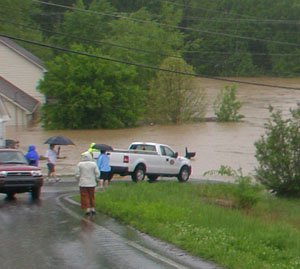 icons damaged or destroyed, and more than $1 billion of damage had been sustained in Nashville alone. And where was our national media in all of this?
icons damaged or destroyed, and more than $1 billion of damage had been sustained in Nashville alone. And where was our national media in all of this?
It’s now more than a week after this catastrophe began, and I’m still having a hard time grasping the totality of what has happened here. Each new conversation with family members and friends back in my native New England leaves me dumbfounded as to how little they’ve heard about this epic 1000-year flood, many first hearing about it from my phone calls and e-mails. Even a friend that I spoke with in eastern Tennessee was completely unaware that the western half of the state had just experienced what is likely to be the costliest non-hurricane water related disaster in American history. During the flood, and in the days that followed, mainstream news stations like CNN, MSNBC, and Fox, provided minimal coverage of this disaster, dwarfed by the Gulf oil spill, and the New York City car bomber. While those stories are certainly important, an event of this magnitude surely warrants more than just a sentence or two in the national spotlight.
Maybe there’s another reason the media paid so little attention, that being the efficient manner in which this disaster was handled. This disaster, which caused evacuations, power outages, and gridlock all over the state, was not accompanied by looting or other kinds of chaos that might otherwise have drawn the media in. The storm came quickly and without warning, decimating communities and infrastructure statewide, and all levels of government combined with an army of volunteers quickly began to mobilize.
“The President was on the phone to me before the sun came up practically on Monday morning” stated Governor Bredesen. “Slightly after it came up, other people from the White House had called and checked in. I’m very, very pleased with the response we’ve gotten from the administration.” he continued. FEMA administrator Craig Fugate, along with Bredesen and Nashville Mayor Karl Dean, toured flooded areas later in the day. By Tuesday several counties had been declared federal disaster areas, which began to allocate necessary funding for the relief effort. Approximately 80 members of the Tennessee National Guard, manning 19 light to medium tactical vehicles engaged in water rescues and evacuations. The Red Cross was here helping organize relief efforts early on as well. Citizens interacted with local media to help present 24 hour news coverage during the event, as local Nashville and Memphis television stations received 40,000 photos and videos from viewers in the first 48 hours.
it came up, other people from the White House had called and checked in. I’m very, very pleased with the response we’ve gotten from the administration.” he continued. FEMA administrator Craig Fugate, along with Bredesen and Nashville Mayor Karl Dean, toured flooded areas later in the day. By Tuesday several counties had been declared federal disaster areas, which began to allocate necessary funding for the relief effort. Approximately 80 members of the Tennessee National Guard, manning 19 light to medium tactical vehicles engaged in water rescues and evacuations. The Red Cross was here helping organize relief efforts early on as well. Citizens interacted with local media to help present 24 hour news coverage during the event, as local Nashville and Memphis television stations received 40,000 photos and videos from viewers in the first 48 hours.
In the center of this immediate and massive effort were the people of Tennessee, with thousands of volunteers engaging from the onset, working as one unified collective with the various government agencies. From the very beginning of this disaster, a spirit of goodwill was evident.
One of my neighbors informed me that on Sunday, day two of the flood, the Publix in Bellevue used generator power to open the store, despite the electricity being down in that area. In 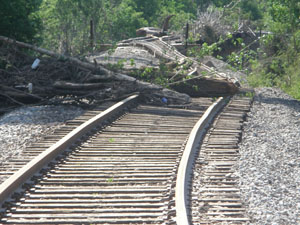 addition to making food, water, and ice available, they also set up a long line of tables on which power strips were placed for local residents to charge cell phones. During the flood event, thousands of volunteers responded to different newscast announcements, showing up at multiple locations to help fill sandbags, assist with boat rescues, as well as a variety of other relief efforts. Community centers and churches across the state became havens for families who lost homes. Schools became water distribution centers. A local construction company owner who was being interviewed on the news said that he already began fixing the roads in his area, as the county road crews were overwhelmed. When officials announced the need to conserve water, water usage almost immediately decreased.
addition to making food, water, and ice available, they also set up a long line of tables on which power strips were placed for local residents to charge cell phones. During the flood event, thousands of volunteers responded to different newscast announcements, showing up at multiple locations to help fill sandbags, assist with boat rescues, as well as a variety of other relief efforts. Community centers and churches across the state became havens for families who lost homes. Schools became water distribution centers. A local construction company owner who was being interviewed on the news said that he already began fixing the roads in his area, as the county road crews were overwhelmed. When officials announced the need to conserve water, water usage almost immediately decreased.
Wednesday, just four days after the flood began, marked the beginning of a three-day flood relief telethon in which many volunteers, including Titans head coach Jeff Fisher and several country music stars, came together to man the phones and help raise money for flood relief. Taylor Swift donated $500,000, with Vince Gill and several others making large donations as well. Benefit concerts are being announced daily. Nashville Mayor Dean announced that the demand for volunteers was going to steadily increase in the weeks and months to 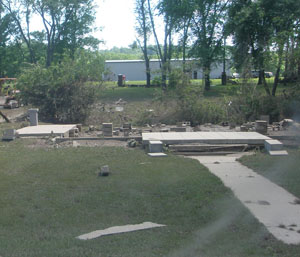 come, and people are responding.
come, and people are responding.
This tragic event of epic proportions is the worst disaster to hit the state of Tennessee since the Civil War, yet our communities are working together. Under the exemplary leadership of Governor Bredesen, combined with the full cooperation of a wide range of local, state, and federal government agencies, the people, the ordinary citizens of this great state are having a huge impact. Neighbors are helping neighbors, people are donating and volunteering, and this event has helped create a sense of unity that is truly magical.
We are not begging the world for help, but to rebuild the communities across this state now shattered by this catastrophe, further assistance will be necessary. Thousands of the homes that were damaged or destroyed were in areas not in flood zones, leaving many homeowners with mortgages on homes that no longer exist, and without insurance money to rebuild. The same is true for many business owners as well. Many schools, hospitals, nursing homes, water treatment facilities, roads, bridges, rail systems, and other infrastructure 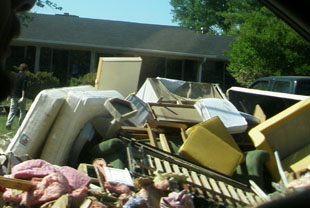 have been damaged or destroyed over an area that spans thousands of square miles. This kind of damage can’t be repaired with just volunteer organizations alone, it’s going to cost billions of dollars and the money has to come from somewhere. In addition to losing their homes and all their possessions, thousands of Tennesseans have also lost their jobs and livelihoods, and this will inevitably put further strain on already stressed entitlement programs. This event has affected over half the counties in the state of Tennessee, not just the city of Nashville as the national media has implied, and it is this message that should be put forth.
have been damaged or destroyed over an area that spans thousands of square miles. This kind of damage can’t be repaired with just volunteer organizations alone, it’s going to cost billions of dollars and the money has to come from somewhere. In addition to losing their homes and all their possessions, thousands of Tennesseans have also lost their jobs and livelihoods, and this will inevitably put further strain on already stressed entitlement programs. This event has affected over half the counties in the state of Tennessee, not just the city of Nashville as the national media has implied, and it is this message that should be put forth.
Perhaps some good can come out of this catastrophe. This disaster has not just brought us closer together as a community, it stands to be a model of how our government can, and should work. A reminder of why government exists in the first place. With so many mounting problems in America today, it is encouraging that our leaders acted so quickly in this moment of despair, and the spirit of community and compassion this event has ignited should be a reminder of all that is good about America, and what we can do when we put our minds together.
So while the people of Tennessee are rebuilding, most of the nation has yet to learn of our predicament and it is unlikely that most will ever know the full extent of what has happened. We will 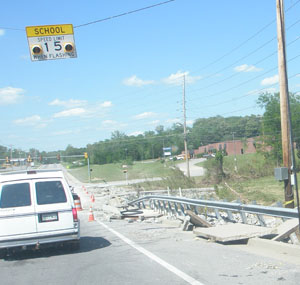 survive, rebuild, and emerge from this wreckage, but as this news has been slow to reach the masses, I urge you all to help spread the word. Natural disasters on this level affect everybody as we are all interconnected. After Katrina, thousands of hurricane refugees relocated to neighboring states, Tennessee among them, and this flood event will inevitably have its own unique set of social and economic impacts that will be far-reaching as well. For many that lived through it, it’s possibly the single most important event of our lifetimes, its significance monumental. In the difficult weeks and months ahead, the people of Tennessee will continue to live, work, and reach out to those in need, because we are all in this together. We are Tennessee, and we are America.
survive, rebuild, and emerge from this wreckage, but as this news has been slow to reach the masses, I urge you all to help spread the word. Natural disasters on this level affect everybody as we are all interconnected. After Katrina, thousands of hurricane refugees relocated to neighboring states, Tennessee among them, and this flood event will inevitably have its own unique set of social and economic impacts that will be far-reaching as well. For many that lived through it, it’s possibly the single most important event of our lifetimes, its significance monumental. In the difficult weeks and months ahead, the people of Tennessee will continue to live, work, and reach out to those in need, because we are all in this together. We are Tennessee, and we are America.
If you need flood relief assistance or would like to volunteer or make donations, please visit the following websites:
Tennessee Emergency Management – www.tnema.org
Middle Tennessee Red Cross Chapters – www.nashvilleredcross.org
Hands on Nashville – www.hon.org
You can also dial 211 for volunteer opportunities if you live in Middle Tennessee
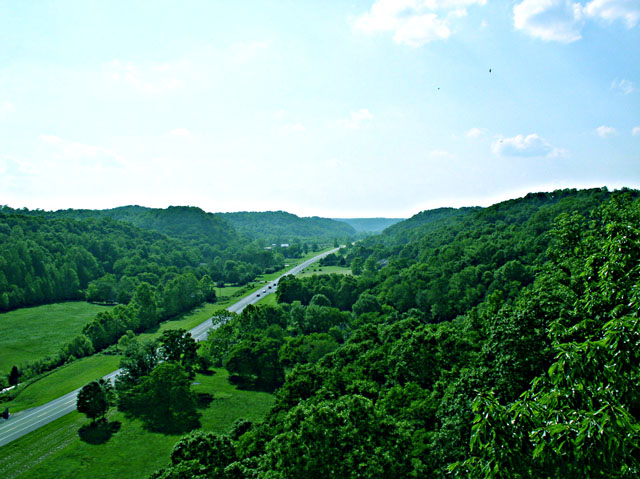



Leave a Reply
You must be logged in to post a comment.